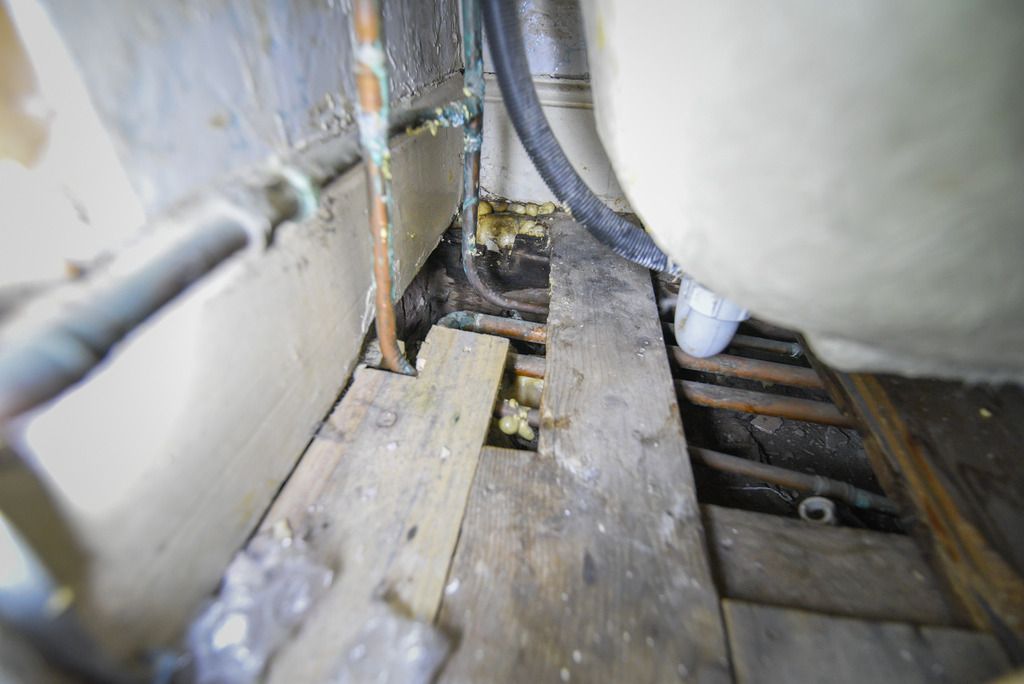- Joined
- 24 Sep 2015
- Messages
- 32
- Reaction score
- 0
- Country

Ok, this is a messy job as we inherited it from the previous owners (he thought himself a top DIY/Builder) Had a new shower installed a few weeks ago but by chance I was looking under the bath to see how I could patch up the flooring (the bathroom gets very draughty) and I can see part of the floor joist is wet. In fact some of it is dry and comes off when I stick my fingers into it. It only seems to have started on the top of it but on further inspection the leaking is coming from old sealant letting in water when showering. I think I have caught it in time before the whole joist was ruined. I am afraid the yellow mess was my attempt a few years ago to fill the gaps with expanding foam (never again)
1) What type of sealant should I get that won't shrink/mould and last years or can I go over it with tile grout ?
2) Not strictly a plumbing question but how would you patch this area under the bath ? I plan to keep the bath but replace taps and plug.


1) What type of sealant should I get that won't shrink/mould and last years or can I go over it with tile grout ?
2) Not strictly a plumbing question but how would you patch this area under the bath ? I plan to keep the bath but replace taps and plug.


Last edited:
